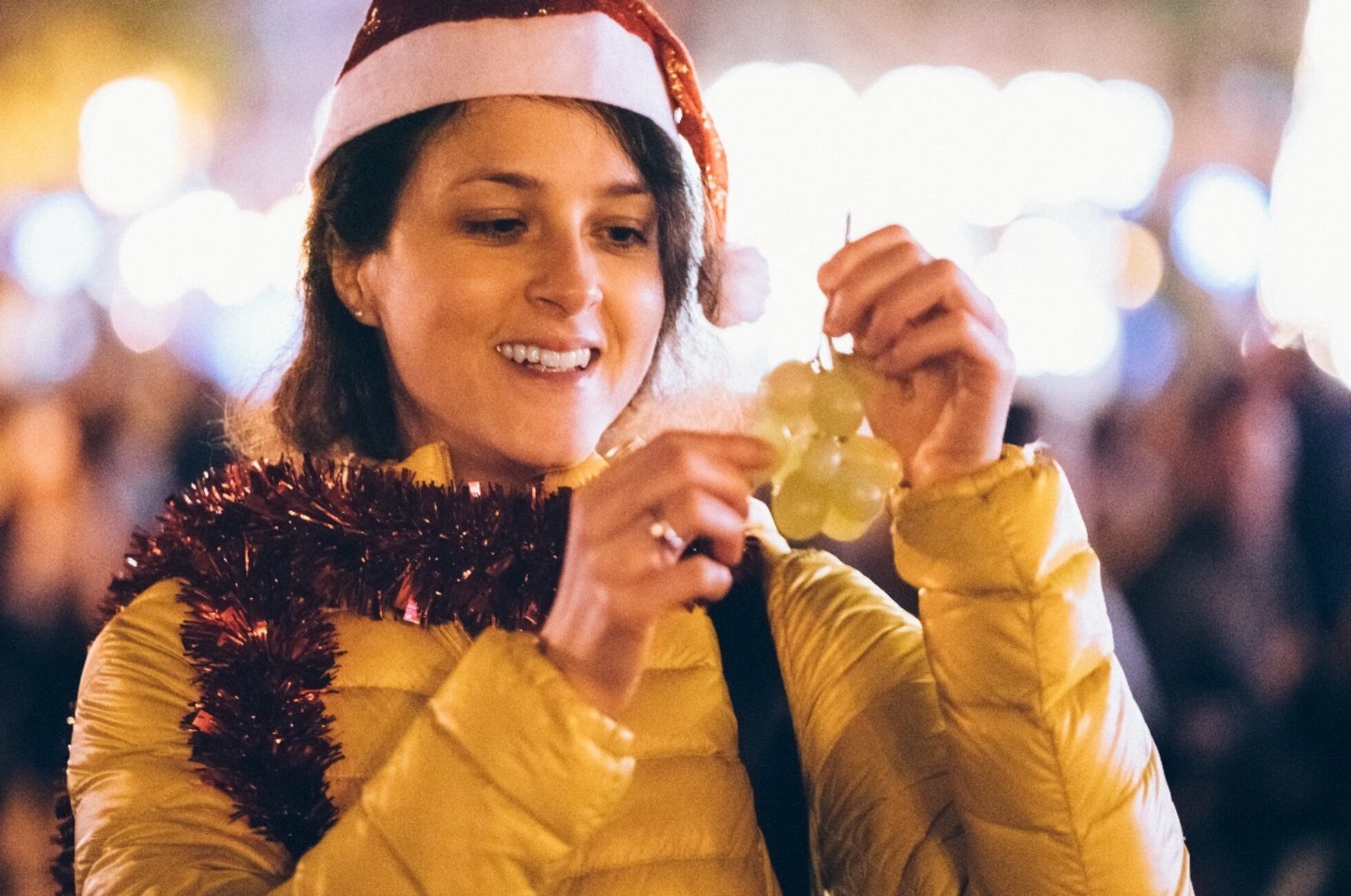
New Year's Eve Nochevieja in Spain: Traditions and rituals
On December 31, as the clock approaches midnight, Spain turns into a land full of life, music and colorful traditions. Nochevieja, or Spanish New Year's Eve, is not only a farewell to the old year, but above all a celebration of life in a style typical of the local culture.
Twelve grapes in the rhythm of the clock
One of the most characteristic elements of this night is the tradition of "Las Doce Uvas de la Suerte". When the clock in Madrid's Puerta del Sol strikes midnight, Spaniards eat twelve grapes - each of them symbolizes hope and happiness for the coming months.
The tradition of eating twelve grapes on New Year's Eve has deep roots in Spanish culture and is practiced in almost all regions of the country. Additionally, standing on the left leg while eating the last grape and entering the New Year "on the right foot" is a symbol of optimism and a good start.
Cava instead of champagne
While in many countries the toast is made with champagne, in Spain it is... cava! This Spanish sparkling wine, often served with fruit, is the perfect companion for New Year's Eve fun.
Red underwear – a symbol of love
It is worth paying attention to a detail - the red underwear worn on New Year's Eve. According to tradition, it brings luck in love. It is often a gift from loved ones, which adds an additional, personal dimension to it.
Happiness in a glass
In Spain, there is an interesting custom that is supposed to attract prosperity in the New Year. It involves placing a gold ring or earring in a glass of champagne just before toasting at midnight. It is believed that such a gesture will bring financial prosperity. If our intention is to ensure fidelity on the part of our partner, we should put a wedding ring in the glass.
Another variation of this custom is to put red fruits in the glass, such as strawberries, cherries, pomegranate seeds or raspberries. It is believed that these fruits are a symbol of love and will bring romantic delights in the coming year.
Green symbols of wealth
Holding a green banknote in your hand while the clock strikes and keeping it in a green bag is a ritual intended to bring wealth. Green in Spanish culture is often associated with hope and renewal. Similarly, a clove of garlic placed in your wallet is supposed to guarantee a constant flow of money.
Maritime tradition
In some coastal regions, such as Valencia, residents welcome the New Year by jumping into the sea. It is a symbolic cleansing and welcoming of new opportunities that the coming year brings.
Summary
New Year's Eve in Spain is a unique combination of tradition, color, music and joy. This is the time when Spain shows its most lively and joyful face, combining ancient customs with modern celebrations.






